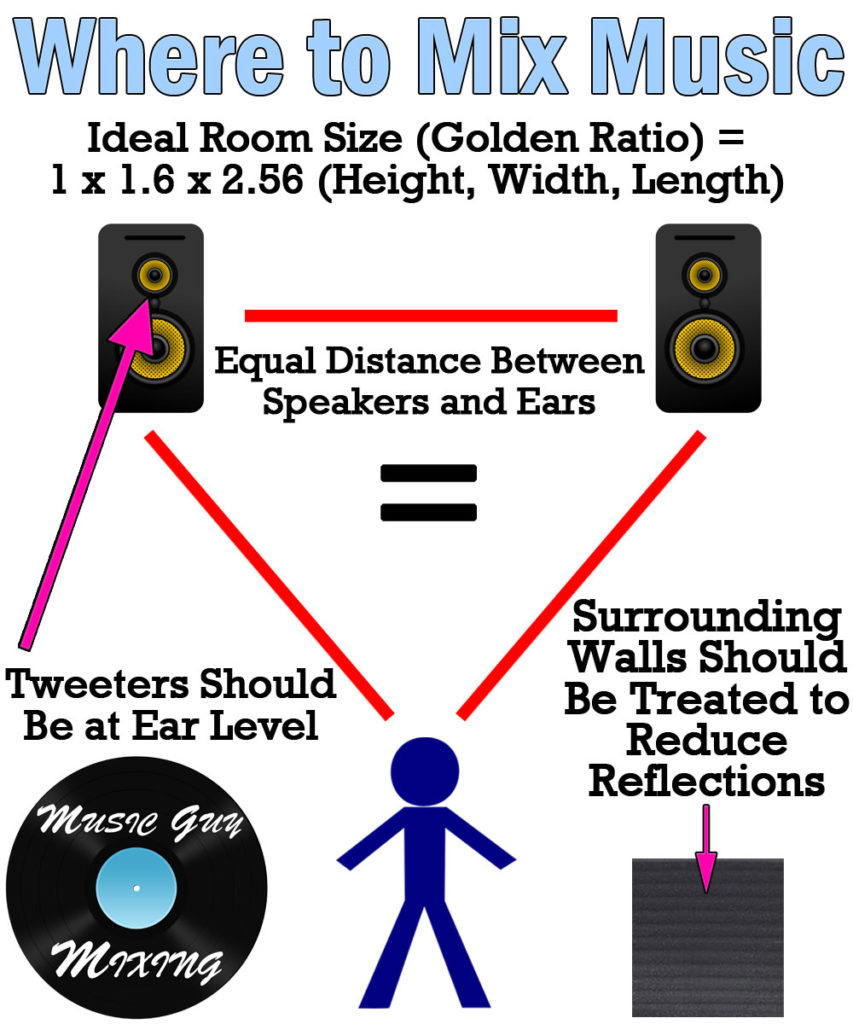Comb filtering can give you an inaccurate representation of an individual track or your entire mix. Let’s identify what is comb filtering and how you can avoid it in your mixes.
What is Comb Filtering

Comb filtering is a product of two or more similar signal’s waves being slightly out of phase.
Sound waves have crests and troughs, or the highest and lowest distance from their baseline. As I covered in the four parts of a sound wave, the difference from the baseline to the crest or trough is the amplitude of a sound wave.
It’s the distance between one crest to another (or one trough to the next), known as its wave length, which determines the speed and pitch of the wave.
When we’re either capturing or outputting two instances of the same signal at slightly different times, you can get the two wave forms moving slightly out of phase, meaning out of alignment.

When two similar waves are moving in such a way that one is cresting while the other is at its trough, they are 180 degrees out of alignment and will essentially cancel one another out so you’ll hear nothing when listening to the combined signal. This is called phase cancellation.
A common example of this is when you’re recording one source with two microphones.
The sound of whatever we’re recording moves fast, but it doesn’t hit the microphones instantaneously.
As such, even a small difference in two microphone positions relative to the source can create a delay between the two signals as they are recorded. Reflections in an untreated room also get picked up by the microphones, adding to the phase issues.
Even a delay of a few milliseconds can cause enough of a difference so that one wave form is in phase while the other is out of phase causing phase issues and comb filtering where certain frequencies drop out.
When the two signals played back aren’t in perfect sync, you’ll begin to hear the combined signal sound weaker or strange.
If you drop an EQ on a bus which both tracks are routed to, you can see notches missing from the frequency spectrum of that combined audio.
The notches somewhat resemble a hair comb, hence the term comb filtering.
How to Avoid Comb Filtering
The solution to avoid comb filtering is twofold.
One, make sure your microphones are set up properly relative to your source, particularly if you’re using more than one with regards to comb filtering. I talked a bit about this in my tips on how to record acoustic guitar in offering a couple specific multi-microphone recording techniques, like the XY recording technique as well as the mid side mic recording technique.
Second, make sure your room is treated for reflections. Even recording with one microphone, reflections off of surfaces can get picked up by the microphone, leading to phase issues and comb filtering.
Treating your room for and being mindful of reflections is important for reducing them when recording as well as playing back/mixing. It’s possible to hear reflections which can cause comb filtering when you’re listening back to the mix, giving you a false impression of something being wrong in the mix when it’s not.
I talked a bit about this in my guide on where to mix music where you live.
Outside of lining the walls with dampening material, larger, more rectangular shaped rooms are ideal for recording, with your monitors facing the farther away wall. If you’re recording you want your source to be far away from a wall, as well, to avoid reflections.
How to Fix Comb Filtering
Even if you’ve already been mindful of and careful about phase issues when recording, you should still be aware of comb filtering when mixing.
Anytime you have two tracks playing the same source, so an instrument recorded by two microphones like previously mentioned, or even a delayed instance of the same track, you should check and make sure they’re in phase.
If you recorded a source both with a microphone as well as DI, there is likely a small difference in the timing between the two tracks, as well.
I talked about how to align tracks in my guide on phase issues, thus making sure they’re in phase and free of comb filtering.
You can do this by pulling up the two tracks together and zooming in, nudging one or the other accordingly to line up with the other.
You can also use a plugin like InPhase from Waves to help you out. Here you simply set one track as the guide via sidechain, and it will tell you how out of phase the two tracks are so that you can adjust accordingly.

Lastly and this likely goes without saying, make sure that the speakers you’re playing your mix back on are equidistant with where you’re sitting so both channels are is reaching you at the same time.

That about does it. Be mindful of phase issues and comb filtering from the start of the recording process to the end of the mixing process and you’ll be in good shape!
